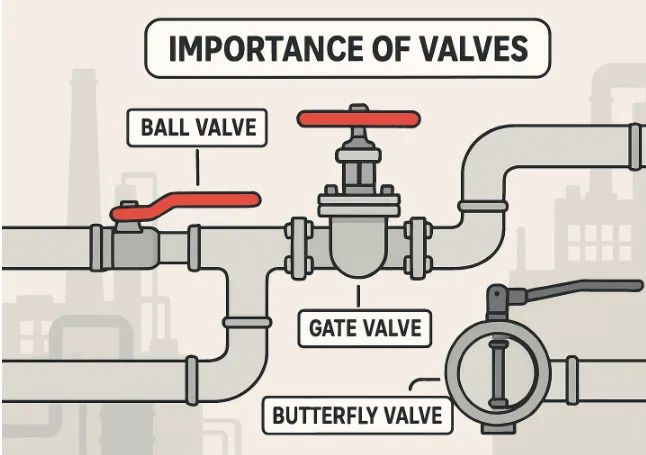Acumatica HubSpot Integration: Flawless 2-Way ERP–CRM Data Sync
In today’s fast-paced business environment, companies are seeking stronger alignment between marketing, sales and operations. Yet even with advanced tools, a common bottleneck remains: disconnected systems. This is where connecting Acumatica with HubSpot can truly transform the way your business operates.
Also Read: Top Reasons to Upgrade Your Home’s Plumbing System
In this article, drawing from 15 years of HubSpot consulting experience, we’ll explore how the Acumatica HubSpot integration works, why it matters, how to implement it and how to avoid common pitfalls.
What is the Acumatica HubSpot Integration?
The Acumatica HubSpot integration connects your ERP system (Acumatica) with your CRM and marketing platform (HubSpot). The goal is to ensure that contacts, leads, customers, orders and other critical data flow between both systems so every team works from the same information.
Core Definition
- HubSpot serves as your marketing and engagement hub, while Acumatica manages operations, inventory, and financials.
- The integration enables data exchange between systems; for instance, a lead generated in HubSpot automatically flows into Acumatica for processing, while sales and order updates from Acumatica sync back into HubSpot.
- Companies can choose from native connectors, third-party applications or custom integrations based on their unique business needs.
Real-Life Scenario
Imagine a mid-sized manufacturer. Their marketing team uses HubSpot for campaigns and nurturing, while their operations team relies on Acumatica for inventory and invoicing. Before adopting HubSpot, the team had to manually share spreadsheets through email to monitor leads and orders. After integration, a HubSpot lead automatically enters Acumatica as a potential deal. Once the deal closes, the order data updates HubSpot, giving marketing visibility into revenue performance. With advanced automation tools like the n8n chatbot, businesses can now connect and optimize workflows more efficiently than ever before.
Why It Matters for Business Growth
1. Single Source of Truth Across Teams
Without proper integration, marketing, sales, and operations teams function in isolated silos, limiting collaboration and efficiency. Leads generated in HubSpot often don’t make it to Acumatica promptly, while customer updates in Acumatica rarely reflect in HubSpot. Integration aligns departments, creating unified data visibility across the customer lifecycle.
2. Better Lead-to-Revenue Visibility
Integrating Acumatica ERP data with HubSpot CRM allows you to track every lead’s journey from initial marketing interaction to final revenue conversion. This gives decision-makers insights into campaign ROI, sales performance and customer retention metrics.
3. Reduced Manual Data Entry and Errors
Instead of exporting and importing spreadsheets, the integration automates data flow. Changes made in one platform are automatically synced with the other, reducing duplicate efforts and lowering the risk of human error.
4. Enhanced Customer Experience
When every team works with consistent data, customers benefit from quicker responses and more accurate information. Service reps can access order history, while marketers can segment audiences based on real purchase data.
Key Features of the Integration
Standard Capabilities
- Two-way Data Sync: Contacts, companies and leads automatically sync between HubSpot and Acumatica.
- Lead Handoff Automation: Marketing-qualified leads from HubSpot can flow directly into Acumatica for sales action.
- Default Field Mapping: Predefined field structures reduce setup time while ensuring consistency across systems.
Advanced Features
- ERP Data Sync: Sync orders, invoices, and inventory data into HubSpot to gain complete visibility across your operations.
- Custom Field Mapping: Companies can set up advanced mapping options to support their unique workflows.
- Scheduled Syncs: Automated schedules (hourly, daily, or real-time) ensure data stays current.
Example
A technology distributor relies on HubSpot for marketing automation and uses Acumatica to manage orders efficiently. With integration, all new leads sync to Acumatica. Once a deal closes, HubSpot automatically updates customer records, giving marketing access to purchase details for future campaigns.
Implementation: How to Get It Right
Step 1: Define Objectives and Scope
Before implementation, identify what you want to achieve. For example:
- What data should flow between HubSpot and Acumatica?
- Should it be a one-way or two-way sync?
- Which teams rely most on this data?
Step 2: Audit and Clean Existing Data
Dirty or duplicate data can cause sync errors. Many companies overlook this step and later struggle with problems such as duplicate records or mismatched contacts after integration. Clean your HubSpot and Acumatica databases first.
Step 3: Configure Connector and Field Mapping
Map your HubSpot fields with corresponding Acumatica fields. For example, “Contact Owner” in HubSpot might map to “Sales Representative” in Acumatica. Pay attention to field types to avoid mapping conflicts.
Step 4: Pilot and Validate
Run a small test. Sync a few records and check for missing or mismatched data. Validate that all necessary information flows correctly.
Step 5: Go Live and Monitor
Once validated, go live. Set a routine to monitor sync logs and fix potential issues. Consistent reviews ensure data accuracy and help optimize overall system performance.
Real-Life Example
A construction supply business managed its marketing leads in HubSpot while keeping sales data separately in Acumatica. Sales complained that marketing’s leads lacked qualification, while marketing had no insight into conversions. After integration, marketing saw which campaigns generated revenue and sales accessed complete lead histories. Within two months, their lead-to-customer conversion rate increased by 25%
Common Pitfalls and How to Avoid Them
1. Ignoring Data Quality
If you integrate before cleaning your data, you’ll only replicate errors across systems. Always ensure your data is cleaned and standardized before integrating or syncing it with your system.
2. Poor Field Mapping
Improper mapping leads to missing or misaligned information. Document every field and ensure consistent data types.
3. Overcomplicating Initial Scope
Start small sync key data first (contacts, deals) before expanding to advanced modules like inventory or invoices.
4. Lack of User Adoption
Even the best integration fails if teams don’t use it. Conduct training sessions so teams understand how to leverage the connected systems effectively.
When Should You Consider Acumatica HubSpot Integration?
- You rely on HubSpot for marketing and Acumatica for operations, yet your data remains disconnected and unsynchronized.
- Your teams spend hours manually transferring data.
- You lack full visibility into the lead-to-order process.
- You’re growing fast and need integrated systems that can effectively support your expansion.
How Much Time and Resources Are Needed?
A standard integration that connects contacts and deals can typically be completed within a few weeks. Complex integrations involving financial, order or inventory data may take several months. Make sure to dedicate sufficient time for data preparation, system testing and user training.
Best Practices for a Successful Integration
- Assign a data governance owner to oversee the project.
- Document all mapping rules and sync directions.
- Schedule periodic checks for sync failures or data mismatches.
- Train all users across departments to ensure adoption.
- Review results quarterly to refine workflows and reporting.
Conclusion
The Acumatica HubSpot integration bridges the gap between marketing, sales, and operations. It aligns teams around shared data, improves customer experiences and drives measurable ROI. With careful planning, clean data, and strategic execution, this integration can transform disconnected workflows into a unified growth engine.
At Mpire Solutions, our team brings over 15 years of HubSpot consulting experience to help businesses implement effective integrations that deliver real results.
FAQs
1. What data can be synced in Acumatica HubSpot integration?
You can sync contacts, companies, deals, invoices and even inventory data, depending on the integration setup.
2. Can the integration support two-way data sync?
Yes. Most connectors support both one-way and two-way synchronization based on your configuration.
3. Is custom development necessary?
Not always. Out-of-the-box connectors handle basic syncing. For advanced ERP data or complex logic, custom configuration may be required.
4. What are common challenges during implementation?
Data mapping errors, duplicate records and low user adoption are the main issues. Addressing these early ensures a smooth rollout.
5. How can success be measured after integration?
Track metrics such as reduced manual data entry, faster lead-to-order processing, improved campaign ROI and higher data accuracy.







